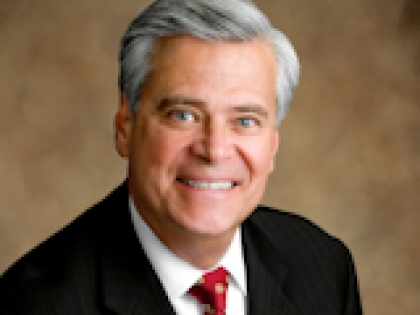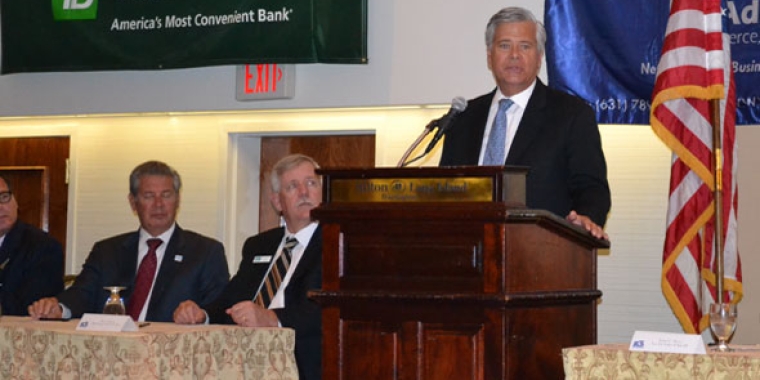
In addition, Senate Republicans will work to establish a system to continually monitor and evaluate the state’s Medicaid program to ensure it is working to provide health care to those who truly need it while protecting taxpayer dollars. The system will be modeled on the strategy utilized in South Carolina to gauge the effectiveness and performance of that state’s Medicaid program.
The Senators’ call to action comes in the wake of a recent report by the Congressional Committee on Oversight and Government Reform that alleged continued waste, fraud and mismanagement in New York’s Medicaid program resulting in billions of misspent tax dollars. The report further alleged that OMIG has “gone adrift,” failing to aggressively investigate and prosecute Medicaid abuse, and conduct audits in a timely manner if at all. In addition, recovery of Medicaid overpayments have “fallen steeply” over the past few years, according to the report.
The Congressional report, “Billons of Federal Tax Dollars Wasted Annually by New York’s Medicaid Program,” recommended a thorough and independent audit and investigation of New York’s Medicaid program before the federal government considers authorizing the state to reinvest billions of dollars in projected Medicaid savings, which puts the funding for New York at risk. According to the report, “Federal taxpayers as well as New York State taxpayers, have a right to know how their tax dollars are actually being spent by New York’s Medicaid program and whether or not New York’s Office of Medicaid Inspector General is capable and willing to protect taxpayer dollars within the program.”
Senator Skelos (R-Rockville Centre) said, “We have a very tight budget deadline and a multi-billion dollar federal Medicaid waiver hanging in the balance. We must act quickly to prove that we are working to get our Medicaid system under control. An immediate, independent audit of the entire state Medicaid system is imperative. These are serious allegations against OMIG, and as authors of the law that created that agency, we have an obligation to determine if OMIG is failing to do its job, as cited in the federal report.”
“Medicaid is New York State’s largest spending program and we must conduct a thorough and sweeping audit of the entire system to make certain that it is operating as efficiently as possible,” Senator Kemp Hannon (R-C-I, Garden City) Chairman of the Health Committee, who chaired the Senate Republican Task Force on Medicaid Fraud and Reform, said. “We need to constantly monitor and review Medicaid because taxpayers have a right to expect that their tax dollars are being spent wisely to care for people who truly need health care.”
“The misuse of Medicaid funds places an undue financial burden on taxpayers and it takes funds away from those who need it most. These actions will show that New York State will not tolerate the abuse of public funds intended to help the most vulnerable members of our society," said Senator Carl Marcellino (R, Syosset), Chairman of the Senate Investigations Committee.
“We need to get control over the outrageous Medicaid costs in New York, which are taking over the State’s budget and making it impossible to provide for other needed services, especially education. An immediate audit of New York’s Medicaid program will help us to hold the line on the exponential growth of Medicaid, without reducing the quality of care for those who truly need it,” said Senator John DeFrancisco (R-C-I, Syracuse), Chairman of the Senate Finance Committee.
Senator Tom Libous (R-C-I, Binghamton) said: “Medicaid scam artists are doing everything possible to rip off the system and the taxpayers. That’s why we have to do all we can to ensure they are stopped. An independent audit of New York’s Medicaid program, along with a serious look at whether OMIG is doing its job to root out fraud, are necessary to protect New York taxpayers.”
Senator Pat Gallivan (R-C-I, Elma) said: "The recent findings of the Congressional Committee on Oversight and Government Reform that demonstrate widespread abuse and mismanagement in New York State’s Medicaid program are just more examples of how badly this program is in need of a top-to-bottom evaluation. A full and transparent audit of the State’s Medicaid program will ensure that this program is operating in as efficient a manner as possible, and is able to continue delivering the services so many New Yorkers rely on."
New York spends $54 billion annually on Medicaid - the highest of any state in the nation. According to the report, New York’s per capita Medicaid spending is nearly double that of Pennsylvania and more than twice as much as California and the rest of the country. The report characterized New York’s philosophy as“if it moves, Medicaid it.”
Over the past two years, the state has enacted several Medicaid Redesign Team (MRT) recommendations that are estimated to save the federal government $17.1 billion over five years. New York has submitted a waiver application to the federal Centers for Medicaid and Medicare (CMS) that would authorize the state to reinvest billions of dollars of the projected savings in the State’s Medicaid program. The federal report puts this funding at risk by calling for the independent audit and investigation before the federal government considers New York’s request for a waiver.
Under law, the State of South Carolina requires two independent reports of the State's Medicaid program to be produced annually to measure Medicaid cost effectiveness and Medicaid health care performance. The reports are intended to be used as a mechanism to hold the South Carolina Department of Health and Human Services (the equivalent of New York’s Department of Health) accountable for care strategy and execution, and to act as a management tool for improving health plan and provider performance at the least cost to taxpayers. The reports examine and rank Medicaid performance, quality, and satisfaction against national data. South Carolina has tailored its reports to assist in providing a continuum of care that is incentivized by high quality and low-cost services, not volume.
Through the joint roundtable meeting, the Senate Health and Investigations Committees will work to put in place a similar system of reporting in New York. The committees will also conduct hearings if necessary.
Rampant Medicaid Fraud
In recent years, news reports have highlighted the fraud that exists within the State’s Medicaid program, and its ever-escalating cost to taxpayers.
Some of the most egregious examples include:
· A dentist billed Medicaid for 991 procedures in a single day;
· A Buffalo school district rubber-stamped 4,434 special education students, nearly 60 percent of the district’s special education population, onto the Medicaid rolls in a single day;
· A woman claimed more than $60,000 in Medicaid benefits even though she had a bank account balance of $400,000 and owned several luxury cars, a million-dollar home, four other properties, and a small business;
· A couple accepted more than $43,000 in Medicaid benefits over a three-year period even though they were both employed, making more than $100,000 a year;
· Medicaid was billed 153 times by an ambulette company that transported a single passenger two or three times a week to doctors’ offices and back for an entire year in 2003.
Cash Recoveries Being Revised Downward
Despite these incidences, there is little evidence that the State’s Office of Medicaid Inspector General, who is charged with identifying waste, fraud and abuse, is doing enough to combat the growing problem.
In fact, cash recoveries by OMIG have been revised downward in recent years. According to OMIG's 2009-10 Medicaid Work Plan, the cash recovery goals for 2010-2011 were set at $429 million and $644 million, respectively. According to the Division of Budget, the cash recovery goals for 2012 and 2013 have been reduced to $323 million.
Alleged Mismanagement at OMIG
Meanwhile, a November 2012 article in the Albany Times Union, “Fraud Agency Called Adrift,” paints a damning picture of both the culture and competence of OMIG.
In it, current and former employees criticized OMIG for being “politicized, dysfunctional, mismanaged and ineffective” in the 15 months under Governor Cuomo’s tenure.
Staff claimed they were given little work to do, making the agency “aimless and unproductive.” They presented recent data that showed “pretty dismal” sums recovered by OMIG staff and said counties were getting very little help controlling Medicaid costs. Employees also alleged a “softer approach” was given to certain audits, despite millions of dollars in potential violations.
For instance, the article cites an audit of Marra Pharmacy in Cohoes, Albany County, which found extensive violations involving missing pharmacy records. Employees claimed the pharmacy should have been subject to a much heftier penalty than the $268,000 settlement reached in August 2012.
Highlights of the U.S. House of Representatives’ Committee on Oversight and Government Reform Report
The report alleged that billions of tax dollars were being wasted every year by New York’s Medicaid. Highlights include:
· The Committee charged that OMIG “has failed to be effective since Governor Cuomo replaced James Sheehan with James Cox as Inspector General.”
· The report cites “troubling” information that suggests OMIG “has become complacent, dysfunctional, and politicized.”
· The report said OMIG Cox has not “hired employees with the necessary knowledge and experience to investigate Medicaid waste, fraud, and abuse and to protect taxpayer dollars from being misspent through the program,” based on the Committee’s assessment of the 2012 Times Union article. Employees described having nothing to do and suffering “from misdirection and its investigations lack a sense of urgency.”
· The report also cites a March 2012 The New York Times article which described OMIG Cox’s recovery of Medicaid overpayments as having "fallen steeply" compared to his predecessor.
· In an April 2011 op-ed in Newsday, an experienced counsel to the state’s health care agencies cited multiple examples of Medicaid-related fiscal abuse, with the Committee’s report noting how both the Department of Health (DOH) and OMIG “looked the other way when faced with evidence of Medicaid fraud.”
